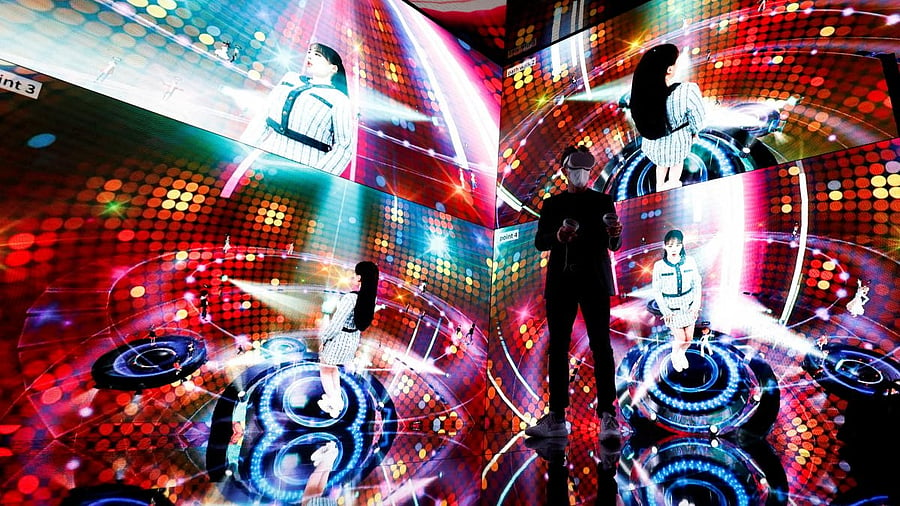
Recently, the avatar of a female beta tester on Meta’s virtual reality platform, Horizon World, was groped by a stranger which led Meta to initiate its own investigation. Unsurprisingly, that day is not far when we all will be living our virtual lives together in a Metaverse space and these incidents would be part of our day-to-day life. Gartner reports that 25% of people will spend an hour per day in the Metaverse by 2026 for work, shopping, education, and so on. Certainly, when there will be so much of human interaction, disputes are inevitable. However, here, the question arises that whether our legal system is in a position to govern and regulate the acts carried out by humans in the Metaverse? It doesn’t seem so.
How does Metaverse work?
While defying precise definitions, Metaverse is generally regarded as a network of 3-D virtual worlds where people can interact, do business, and forge social connections through their virtual “avatars.” Within the metaverse, you can make friends, rear virtual pets, design virtual fashion items, buy virtual real estate, attend events, create and sell digital art — and earn money to boot. Participants access the virtual environment via their desktop computer or mobile device, pick or design their avatar, and then use keyboard buttons to navigate the space: arrow keys to move around, double click to sit on a chair, and so forth.
However, be it the virtual world or the real world, where humans interact with each other, disputes will arise and we have to keep our laws ready for it.
There are some offences that require the physical existence of humans. For instance, the offence of murder cannot be committed until the person is actually killed; offences such as assault, acid attack, culpable homicide, and kidnapping, are some that need the user’s physical existence. In these kinds of offences, it is the human body which is the primary target. Thus, it does not seem that these offences can be committed by a user in the Metaverse as the user does not carry his/her body into the Metaverse.
However, there are some offences which do not require the physical existence of humans. For example, the offence of insulting the modesty of a woman can be committed in the Metaverse if any male avatar commits any act (such as making a gesture) before a female avatar which produces some effects on the senses of the real woman, in which case it can be said to have insulted the modesty of that woman. Likewise, offences such as outraging the religious sentiments, stalking, and criminal intimidation do not require the physical existence of the victim as the primary target is the human mind. Thus, these offences can be committed by in the Metaverse because the user carries its mind into the Metaverse. Similarly, civil disputes such as copyright infringement, trademark infringement, and property issues can arise without the requirement of the physical existence of any human body.
Identity issue
Now, it is obvious that offences and disputes can arise from the acts of the avatar. However, would it be possible to identify the culprit? Since it is the virtual avatar, which user has actually committed the offence or carries the civil liability? The identity of the offender is necessary for the victim or plaintiff because the law would take its recourse only against the human body and not the avatar. Let us say if a victim has to file a complaint against an act of a human committed through an avatar, who would he or she name in the complaint? How would the investigation agency trace the actual perpetrator through the Metaverse? This can be resolved only if the Metaspace provider keeps track of each and every action committed by all avatars on its space. Though it seems an onerous task, there needs to be an option to all the users to gather information regarding the identity of an actual user who is controlling that avatar at any time the other user wants, provided he has reasons to ask so. No doubt, this would lead to issues related to users' right to privacy.
Evidentiary issues
In the real world, we have the advantage of body sketches by the victim, statements of witnesses, medical examination of the victim, etc., to aid in investigation and subsequently, trial. However, in the Metaverse, the victim would have no opportunity to see the face of the offender, engage avatars as witnesses or get himself or herself medically examined for the corroboration of his or her allegations. Again, this can be resolved only if the Metaspace provider keeps track of each and every action of all avatars on its space and provides the option to all the users to gather information regarding the identity of the actual user who is controlling that avatar at any time the other user wants, provided he has reasons to ask so.
Conclusion
No doubt, the groping incident discussed above has opened a Pandora’s box regarding the law and its enforcement. As the experience becomes more immersive in the Metaverse, we’ll need to consider this in more depth. As the Metaverse gets closer to imitating the physical world, damages (psychological, emotional, and even physical) become ever more real. The Metaverse is coming faster than we think and we need to ensure our laws are ready for it.
(The writer is a law student at Faculty of Law, University of Delhi)